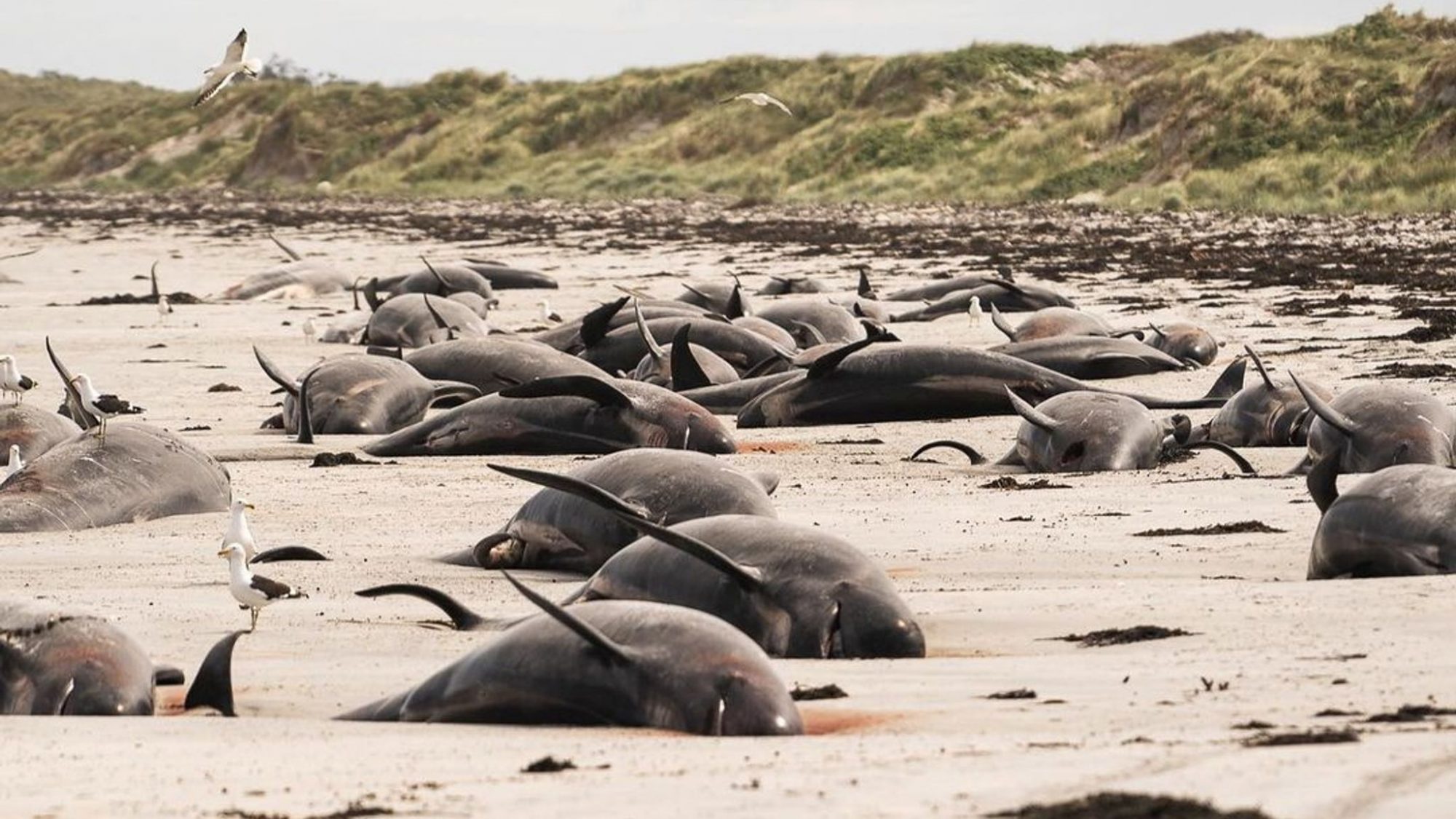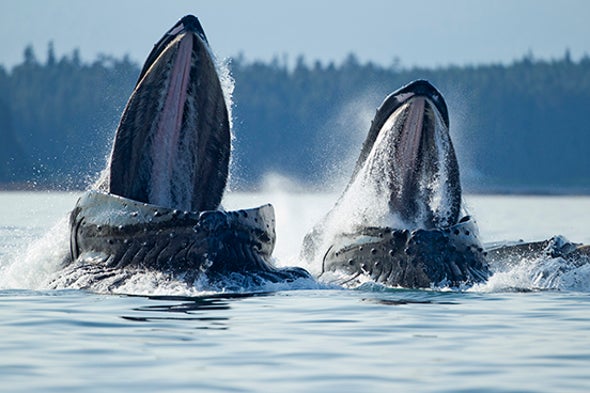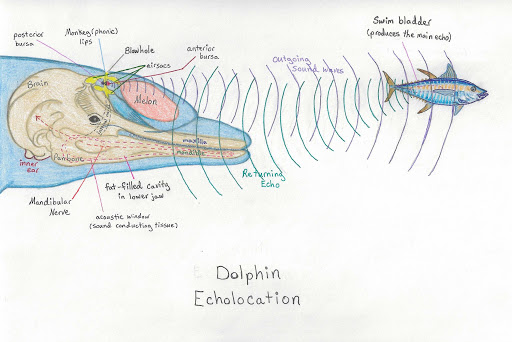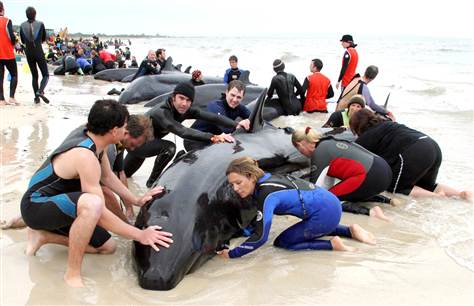On the 24th of November a mass stranding of over 120 pilot whales along with a half dozen dolphins was discovered on the Chatham Island group some 600 km east of the main Islands of New Zealand. Now the Chatham islands have long been known as a whale ‘hot spot’, an area were large numbers of many different species of aquatic mammals congregate, and unfortunately often die by swimming right up onto the sandy beaches.

Because of the remoteness of the islands getting help to the beached animals was difficult and in the stranding on the 24th ninety-seven pilot whales were dead before rescuers could arrive and the remaining twenty-eight were in such bad shape that they had to be euthanised. Such mass deaths are common on the Chatham islands with an average of over 300 dolphins and whales dying there each year. Indeed the largest mass stranding in recorded history, over 1,000 animals, occurred there in 1918.
So why do such mass beachings happen, what causes otherwise healthy marine whales and dolphins, collectively known as cetaceans, to just swim onto a beach where, unable to get back into the water, they die of exposure? To scientists it’s pretty much of a mystery but there are historical records of such events happening dating back thousands of years so at least this time it’s not our fault. Well, not all our fault as we shall see.

One important clue to the beachings is the fact that virtually all of the animals involved are toothed whales and dolphins, active hunting animals who prey on fish and other marine life. The big filter feeding baleen whales appear to be relatively immune to whatever it is that causes the strandings. Another clue is that it is whale and dolphin species that usually live in deep water that are most susceptible to beachings, animals that are more familiar with shallow water environments rarely strand themselves.

Some of the most often discussed hypothesis to explain the mass beachings include animals chasing their prey too close to unfamiliar shores and getting caught by a falling tide. Or in some cases the animals themselves could be chased by their predators onto the shoreline. Animals who normally live in deep water and are using their echolocation ability to navigate might be fooled by the gently sloping rise of a sandy beach into thinking they are in deeper water. Also mass beachings often occur in species with strong herd instinct and it might be that an illness in the lead animal, even just an earache, could lead to the stranding of the entire pod.

Some scientists have also suggested that, if whales navigate by using Earth’s magnetic field, as Pigeons appear to do, Solar storms could be the cause. A few researchers have even suggested that global warming and ocean pollution, that is plastics, could be making the problem worse. Finally there is growing evidence that high-powered Sonar pulses generated by naval warships searching for submarines does cause damage to the ears of whales and dolphins and a link between Sonar and some cetacean strandings now seems very likely.

There was a time, not so long ago that people considered beached whales to be a fortuitous event and they would rush to kill and harvest the helpless animals for food or their oil. It’s really only been in the last 50-60 years that serious attempts have been made to help the stranded animals and refloat them back into the ocean. So far those efforts have had mixed results, often because the beachings are not discovered until it is too late for many of the animals.


Still we are trying to help and the more we try the better at it we will get. It’s nice to see that for a change human beings are doing what they can to alleviate a tragedy in the natural world rather than being of cause of one.
